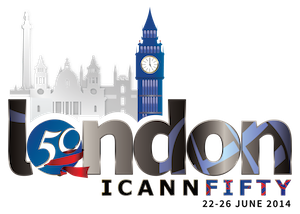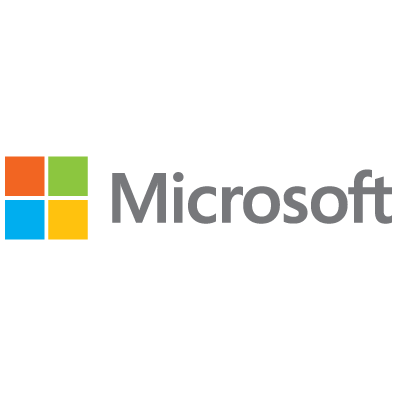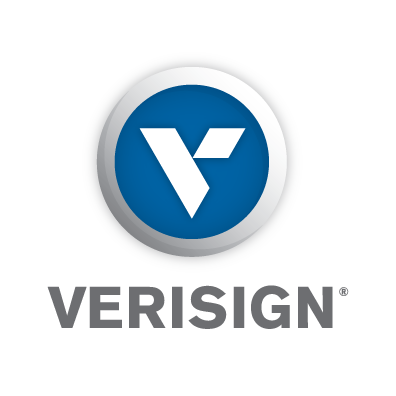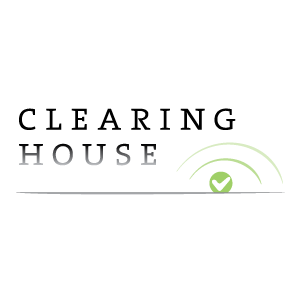General Information
- Airport & Transportation
- Climate
- Currency
- Tipping
- Eating & Drinking
- Electricity
- Language
- Time Zone
- Registration
- Safety & Security
AIRPORT
Located 32km (20 miles) to the west of Central London, London Heathrow Airport (LHR) is one of the busiest and most advanced airports in the world. To see LHR's exact location, visit the London Airports Map.
With 190,000 passengers arriving and departing every day, Heathrow handles more international passengers than any other airport in the world.
London has four additional major airports : London Stansted, London Gatwick, London Luton and London City.
TRANSPORTATION
Travelling by Train To And From Heathrow Airport
The Heathrow Express is the fastest way to travel into Central London. Trains leave every 15 minutes and the journey takes 15 minutes. Trains leave Heathrow Airport from approximately 5am until 11.45pm. Standard adult fares are £20 for a single ticket purchased online or at a ticket office/machine (or £25 when purchased onboard). Visit the Heathrow Express website for further details.
Heathrow Connect services run from London Paddington, calling at Ealing Broadway, West Ealing, Hanwell, Southall, Hayes & Harlington and Heathrow Central (Terminals 1 and 3). For Terminals 4 and 5, there's a free Heathrow Express transfer service from Heathrow Central. Heathrow Connect journey time is about 25 minutes from Paddington to Heathrow Central and adult single tickets cost £9.50. Visit the Heathrow Connect website.
Travelling By Tube To And From Heathrow Airport
The Piccadilly line connects Heathrow Airport to Central London and the rest of the Tube system. The Tube is cheaper than the Heathrow Express or Heathrow Connect but it takes a lot longer and is less comfortable. Tube services leave Heathrow every few minutes from approximately 5.10am (5.50am Sundays) to 11.45pm (11.30pm Sundays).
Journey time to Piccadilly Circus is about 50 minutes. There are three Tube stations at Heathrow Airport, serving Terminals 1-3, Terminal 4 and Terminal 5. A single paper ticket from Heathrow (Zone 6) into Central London (Zone 1) costs £5.50. If you're going to be using London's public transport system, it's worth buying an Oyster card. Visit the Transport for London (TfL) website.
Travelling By Coach To And From Heathrow Airport
National Express runs frequent coach services between Heathrow's central bus station and Victoria Coach Station. The journey takes between 40 minutes and one hour 30 minutes, depending on the route. Some services stop en route in Hammersmith or Earl's Court. Standard single tickets cost £6. Services from Heathrow commence at 5.35am and run until 9.40pm.
Travelling By Bus To And From Heathrow Airport
Between approximately 11.30pm and 5am (depending on the day of the week), the N9 night bus runs about every 20 minutes to Central London (Trafalgar Square). Journey time is approximately 76 minutes. For more information visit the Transport for London website. Standard bus fares apply (£1.40 Oyster/ £2.40 cash) and are accepted.
Taking a Taxi To And From Heathrow Airport
There are usually taxis queuing for customers at London's airports. Only use a black cab or reputable minicab and never use unauthorised drivers. Ask the driver or minicab company how much your journey will cost beforehand. A metered trip in a black cab to/from Central London generally costs from £50 to £80 and takes 30 minutes to one hour. All Heathrow Terminals have an approved taxi desk and authorised taxi rank. Visit the Heathrow Taxis website.
CLIMATE
June is a popular time to visit London, UK, when the weather is steadily getting warmer as the month goes on. During this time of year, the average temperature is 16°C – that’s 3°C warmer than May. This month is characterised by rising temperatures, with daily highs starting off at around 19°C on June 1st and rising up to 22°C by June 30th, rarely falling under 15°C or going over 25°C. The daily low temperatures increase in a similar fashion, beginning at 12°C on June 1st and rising up to 15°C by June 30th, only dropping under 10°C or going over 17°C one day out of every ten.
CURRENCY, EXCHANGE & CREDIT CARDS
The UK's currency is the pound sterling (£ / GBP). Despite being a member of the European Union, the UK has not adopted the euro.
There are 100 pence (p) to the pound (£). Notes come in denominations of £5, £10, £20 and £50. Coins come in 1p, 2p, 5p, 10p, 20p, 50p, £1 and £2.
Currency Exchange in London
The pound is generally a stable currency. You can find the current exchange rates at www.postoffice.co.uk
There are numerous bureaux de change in London – often located inside banks, travel agents or Post Offices, as well as at London's airports and major train stations. It's worth shopping around to get the best deal – compare the exchange rates on offer and don't forget to ask about commission. A good tip is to ask how many pounds you will receive in total after all charges have been deducted.
The Post Office's Bureaux de Change network is the largest provider of foreign currency in the UK. The Post Office is consistently voted "Best Foreign Exchange Provider".
Credit Cards and Cash Machines in London
Credit cards – especially Visa and Mastercard – are widely accepted in London's restaurants, bars, cafés and shops. American Express and Diners Club cards are less commonly accepted.
There are plenty of cash machines (also known as cashpoints or ATMs) dotted around London. Most accept international cards with the Visa, Plus, Mastercard, Cirrus or Maestro symbols. Some other systems are also recognised, but it's a good idea to check with your bank or card company before you travel. If you have a non-UK account you will almost certainly have to pay a charge when you withdraw cash. Again, contact your bank before travelling to find out details.
You might see cash machines in some corner shops and small supermarkets. Check before using them as they are likely to charge a fee for every transaction. Many cash machines also provide the facility to top up your mobile phone credit.
Money Talks: Speak Like a Londoner
You will usually hear British people say "pee" rather than pence, as in 50p (50 pee). More colloquially, a pound is known as a "quid", a five pound note is a "fiver" and a ten pound note a "tenner".
TIPPING
Tipping is appreciated but not always appropriate in London. There are some situations where it is customary, for example in restaurants. Here are a few guidelines, although ultimately tips (or gratuities) are discretionary and depend on the quality of the service you receive.
Tipping in London's Restaurants
It is customary to leave 10-15% of the bill when eating out. However, restaurants often add on a service charge (usually 12.5%), especially if you're in a large group, so it's worth checking your bill if you don't want to tip twice. It's not customary to pay a tip for fast food, self-service or takeaway meals.
Top tip: Although restaurants (and other businesses) should make their policy clear, it's worth checking with your waiter that he/she will personally receive your tip rather than the company – particularly if you're paying by credit card.
Tipping in Bars and Pubs
People generally do not tip in pubs in London. Bartenders sometimes hand back change on a tipping tray, although it's still up to you to choose to leave a tip.
Tipping in Hotels in London
Like restaurants, most London hotel bills include a service charge, usually 10-12%. If there's no service charge added to your bill in a hotel restaurant, it's customary to tip as for any other restaurant (10-15% of the bill). For room cleaning staff, you can leave an amount of your choosing on departure. Tips for other hotel staff such as concierges and door staff are discretionary and are most commonplace for porters.
Tipping Taxi Drivers
It is polite to tip 10-15% of the taxi fare for black cabs and licensed minicabs in London. However, most people simply round up the fare to the nearest £1 and tell the driver to "keep the change". If you've had a longer journey and the driver has assisted you with luggage, you may wish to tip a little more, up to £5.
FOOD AND DRINK
Find out about the best London restaurants here, or enjoy a drink at one of London's lively pubs and bars.
ELECTRICITY & ELECTRONICS
UK appliances are fitted with three-pin plugs that can be connected to the UK mains supply through wall sockets. Unlike the sockets in many other countries, these have a switch to turn the power supply on and off – make sure you've turned it on if you're trying to charge your appliance!
UK power sockets deliver an average voltage of 230v, although in practice this can be slightly higher.
To charge devices that are compatible with this voltage, simply buy the appropriate adapter from the airport or from high street shops such as Argos. If your device runs on a lower voltage, however, then you will also need a converter to stop it from over-heating. Even if your country uses lower voltages, remember to check whether your device is dual-voltage (look for the 110-240v notation) before buying a converter.
LANGUAGE
The de facto official language of the United Kingdom is English, which is spoken as the primary language of 95% of the UK population.[5] The Welsh language is also an official language in Wales,[7] is the only de jure official language in any part of the United Kingdom, and is the second most spoken language in the United Kingdom. In 2011 Polish was the second most spoken language in England and the third most-spoken in England and Wales.[8] In addition, there are several other living languages indigenous to the country, various regional dialects, and numerous languages spoken by recent immigrant populations and those who have learned them as second languages.
TIME ZONES
London Time is the same as Greenwich Mean Time less than half of the year. During Summer Time (Daylight Saving Time), London Time is GMT+1, also known as British Summer Time (BST).
REGISTRATION FEES
Registration and attendance at the meeting is free. However, you are required to pay for your accommodation and meals. Coffee breaks are provided during the meeting.
SAFETY & SECURITY
Safe Travel in London
- Plan your route before you leave. See the Transport for London website
- Only use taxis or registered minicabs
- Try to avoid walking alone at night. Keep to well-lit main roads
- Beware of wearing headphones – they reduce awareness of your surroundings
- In the UK, cars drive on the left. To ensure you cross roads safely, only use designated crossings, only cross when the green man is showing and take note of the signs indicating "look right" or "look left" to spot any oncoming traffic
Staying Safe in Bars and Restaurants
- Make sure you keep your property out of sight and safely under the table
- Many venues have clips under the tables, use them to secure your handbag or briefcase
- Don't accept drinks from strangers
- Check up on your friends by phone or text to make sure they got home safely and vice-versa
Keep Your Belongings Safe
- Don't leave your bag unattended anywhere in London – this can lead to a security alert
- Keep your purse or wallet close to your body and don't carry too much cash
- When using a cashpoint, check that no one is looking over your shoulder and that the ATM hasn't been tampered with. Cover the keypad so no one else can see your PIN number
- Keep your mobile phone, MP3 player, camera and other gadgets out of sight in your pocket or handbag when not in use
- Record details of your electronic serial numbers (ESNs)
- Inform your service provider and police if your phone or other valuables are stolen or lost. Dial 101 for your nearest Police service
Useful Contacts
Emergency Services (police, ambulance, fire department) on 999 or 112. These numbers are free to call – only use them in a real emergency. To report non-urgent crime, contact your local police station by calling 101 from within the UK.













































